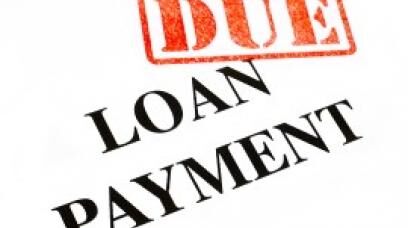
There are two types of promissory notes often used to evidence a loan or debt. One type is referred to as “demand” promissory note because the note is payable at any time on demand by the lender. The other type is “with distinguishing characteristics.”
A demand note is theoretically due from the moment it is executed. A demand note is not payable, however, until its holder makes demand to its maker for immediate payment. You have probably heard bankers or lawyers talking about a debt that is “due” and “payable.” The distinction is important. Since a demand note is always due, the holder may make a demand, i.e., “call” the note payable at the holder’s discretion. After the holder of a demand note has called the note payable, the maker has an obligation to pay the balance of the note immediately. If not so paid, the note may be the subject of a legal action to enforce the payment of the indebtedness evidenced by the note.
Nebraska law does not require a lender in a commercial context to call a demand note only pursuant to a good faith business judgment. Rather, the holder of a demand note may call or demand for its payment at any time and for any reason.
You may be wondering how you can determine whether any given promissory note is a demand note and therefore subject to the unique characteristics mentioned above. Under Nebraska’s version of the Uniform Commercial Code, a note is a demand note if it: (1) states it is payable on demand or at sight; (2) indicates that it is payable at the will of the holder; or (3) does not state any time of payment. For example, assume that two parties executed a promissory note under the following circumstances. The principal sum of the note was $20,000.00, and the note accrued interest at a rate of 7 percent per annum from its date of execution until paid. The note did not contain any language indicating the note was payable on demand or at sight. Nor was there a due date inserted in the note. Under these circumstances, the note would be treated as a demand note since no specific due date was inserted in the note. As a result, the holder of the note could call the note payable at any time and could bring a lawsuit to enforce the payment of the indebtedness evidenced by the note.
When dealing with a demand note, a holder must be aware of two important limitation periods. These limitation periods concern: (1) when to demand or call the note payable; and (2) when to commence a lawsuit to enforce payment on the note. These limitation periods may vary from state to state. Under the law of Nebraska, there are two separate triggering dates which handle the two different limitation periods. The first triggering date, dealing with when to demand or call a demand note payable, is the later of the date the demand note was executed and delivered or, assuming that a payment of principal or interest was made on the note, the date on which the most recent payment was made. The applicable limitations period for this date is ten years. This means that if a holder of a demand note has not made any demand for payment to the maker, and the maker has not made any payment of principal or interest on the note for a continuous period of ten years, then the maker has a statue of limitation defense and a lawsuit to enforce the note brought by the holder may not be successful. If the maker has made a payment of principal or interest, then the ten-year limitations period does not expire until ten years from the date of payment, assuming no further payments of principal or interest are made and the holder has not demanded payment. In order to prevent the ten-year limitations period from effectively time-barring a lawsuit to enforce a demand note, the holder of the note would only be required to make a demand for payment to the maker within ten years after the date the note was executed and delivered to the holder.
The second triggering date, dealing with when to commence a lawsuit to enforce payment of a demand note, is the date on which the first demand for payment of the note is made. The applicable limitations period for this date is six years. This means that if a holder of a demand note has made demand for payment of the note, but has not initiated a lawsuit within six years from the date of demand to enforce the maker’s obligation under the note, then a subsequent lawsuit to enforce the note could be barred.
As you can see, the Nebraska approach to limitation periods of demand notes relies heavily on the holder making demand for payment. This raises the question of what actions a holder of a demand note must undertake in order for such actions to properly be considered a “demand.” Although Nebraska courts have not decided what sort of actions constitute sufficient demand, cases from other jurisdictions provide useful guidance to holders of demand notes who are attempting to demand repayment on their notes through letters to their respective makers. These cases suggest that letters to makers demanding repayment should specifically refer to the demand note upon which repayment is being called and should make a request for immediate payment.

